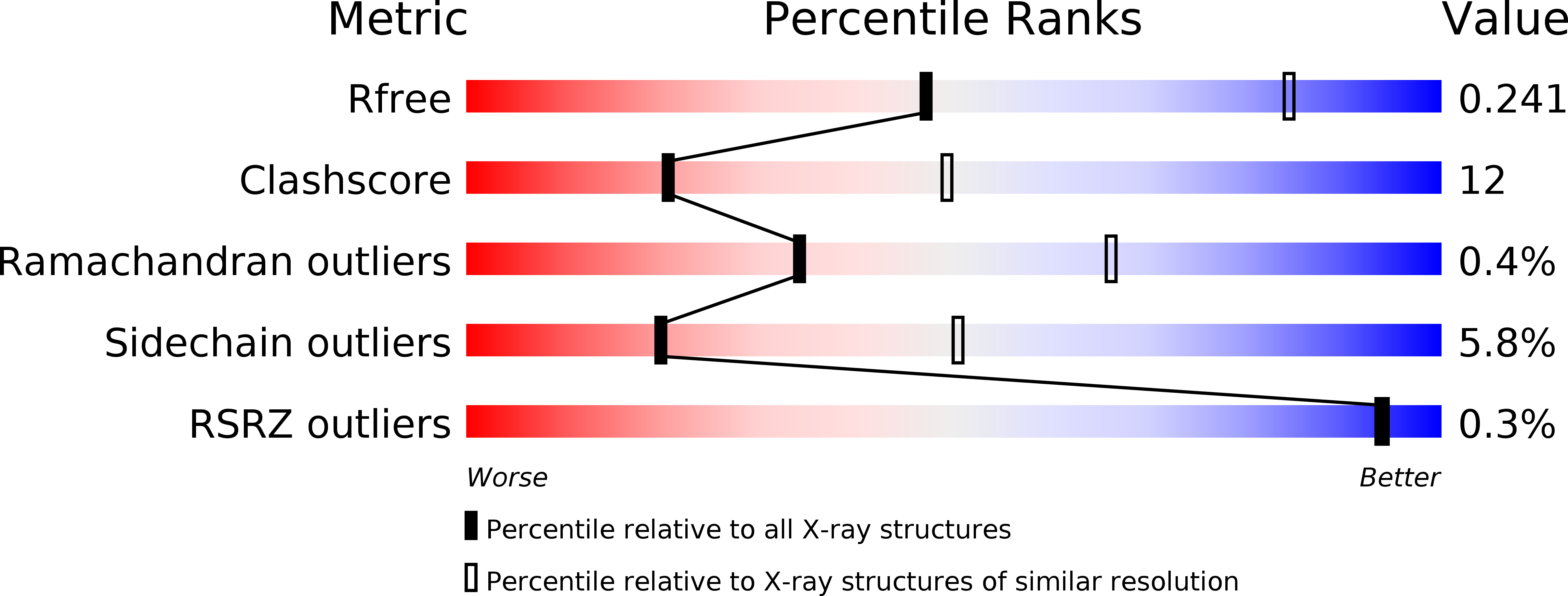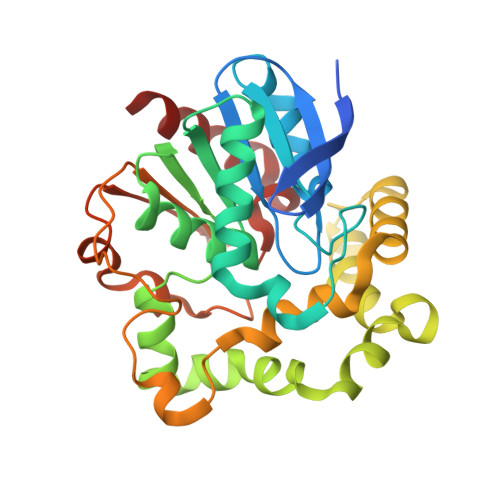Engineering of an epoxide hydrolase for efficient bioresolution of bulky pharmaco substrates.
Kong, X.D., Yuan, S., Li, L., Chen, S., Xu, J.H., Zhou, J.H.(2014) Proc Natl Acad Sci U S A 111: 15717-15722
- PubMed: 25331869
- DOI: https://doi.org/10.1073/pnas.1404915111
- Primary Citation of Related Structures:
4INZ, 4IO0, 4NZZ, 4O08 - PubMed Abstract:
Optically pure epoxides are essential chiral precursors for the production of (S)-propranolol, (S)-alprenolol, and other β-adrenergic receptor blocking drugs. Although the enzymatic production of these bulky epoxides has proven difficult, here we report a method to effectively improve the activity of BmEH, an epoxide hydrolase from Bacillus megaterium ECU1001 toward α-naphthyl glycidyl ether, the precursor of (S)-propranolol, by eliminating the steric hindrance near the potential product-release site. Using X-ray crystallography, mass spectrum, and molecular dynamics calculations, we have identified an active tunnel for substrate access and product release of this enzyme. The crystal structures revealed that there is an independent product-release site in BmEH that was not included in other reported epoxide hydrolase structures. By alanine scanning, two mutants, F128A and M145A, targeted to expand the potential product-release site displayed 42 and 25 times higher activities toward α-naphthyl glycidyl ether than the wild-type enzyme, respectively. These results show great promise for structure-based rational design in improving the catalytic efficiency of industrial enzymes for bulky substrates.
Organizational Affiliation:
State Key Laboratory of Bioreactor Engineering, East China University of Science and Technology, Shanghai 200237, China; State Key Laboratory of Bio-organic and Natural Products Chemistry, Shanghai Institute of Organic Chemistry, Chinese Academy of Sciences, Shanghai 200032, China; and.
















